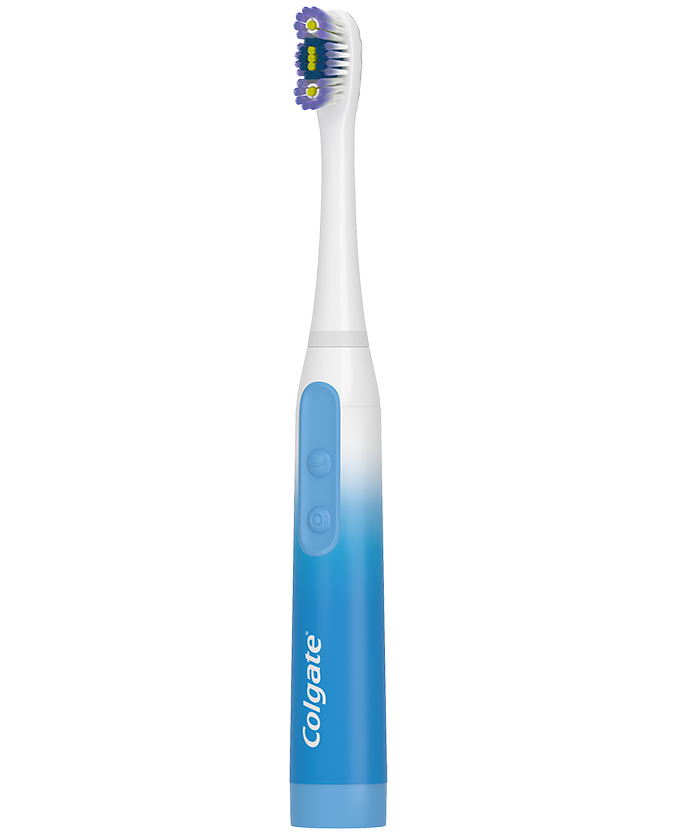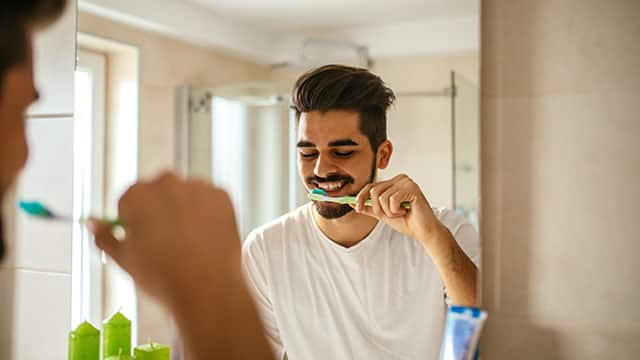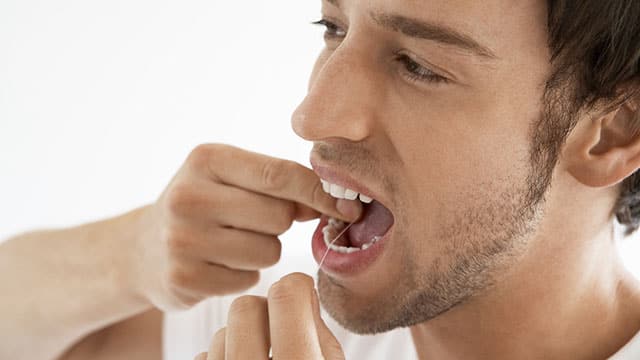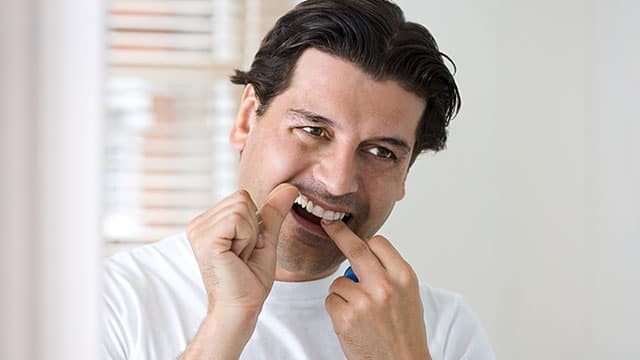
Floss Tip Sonic Powered Battery Toothbrush
The Colgate 360 Floss Tip sonic powered toothbrush removes more plaque for a healthier mouth**.

How Long Should You Brush Your Teeth?
Proper brushing takes at least two minutes. Two minutes can seem like a long time - especially for children. You can use a timer to make it a bit more fun. Some electric toothbrushes have automatic timers to encourage dedicating two minutes to brushing.
Can You Brush Your Teeth Too Much?
Brushing for longer than two minutes is not harmful, as long as you're using firm but gentle pressure. Using too much pressure can damage enamel and gum tissue, leading to tooth sensitivity and irritated gums. Try brushing with your non-dominant hand to realize the difference in the amount of pressure on your teeth.
What techniques should I be using?
You can prevent and control gum disease by brushing around and under the gumline where bacteria and plaque accumulate. There are three conventional brushing techniques you can try to ensure you're cleaning your teeth well.
1. Bass or Sulcular Technique
The Bass method of brushing involves using the toothbrush bristles to scrub off plaque— commonly known as biofilm — from underneath your gums before it can cause gingivitis. A 2018 systemic review and analysis of various brushing techniques found that the modified Bass/Bass technique was the most effective in reducing plaque and gingivitis than the horizontal method.
- Hold the toothbrush parallel to your teeth
- Tilt the brush to a 45-degree angle
- Angle the brush so the bristles are slightly under the gumline
- With a firm yet gentle pressure, brush back and forth or use a circular motion 15 to 20 times before moving to the next area
- Brush all teeth on the outer surface and then clean the backside of the teeth using the same motions
- Hold the toothbrush in a vertical position behind your front teeth and brush up and down, using the bristles on the toe of the brush
- Brush the chewing surface of the molars and brush your tongue
2. Stillman Technique
The Stillman brushing technique is similar to the Bass technique. However, instead of circles, you use short horizontal strokes back-and-forth on all surfaces of the teeth.
3. Charter Technique
Your dentist may recommend the Charter method if you have spaces between your teeth, gum recession, exposed roots, or have had periodontal surgery. Charter is also useful if you have orthodontic appliances or fixed partial dentures.
- Place the bristles on the gumline at a 45-degree angle, pointing toward the tooth's chewing surface or crown. This position is the opposite of the Bass and Stillman technique.
- Gently vibrate the brush for 15 to 20 counts, using short circular strokes or small back and forth motions.
- Brush all your teeth in the same pattern, brushing all tooth surfaces and sides.
Brushing modifications
You can use modified versions of the Bass, Stillman, and Charter techniques too. Follow the method you choose, but after brushing an area, roll or sweep the bristles away from your gums. This modification sweeps out debris between the teeth and cleans the entire tooth surface. Speak to your dental hygienist for more information or technique recommendations for your situation.
What tools are best for brushing my teeth?
Combined with the brushing technique, you need the correct tools to do a good job with any task. In general, choosing a soft-bristle toothbrush that can fit in the hard-to-reach places and your mouth with fluoride toothpaste will do the job! It's essential to replace your toothbrush every three to four months. Worn, frayed brushes don't clean thoroughly, and older brushes can harbor bacteria. Whatever tools are most comfortable for you to complete proper brushing twice a day, two minutes each time are the best choice.
How to tell if your teeth are clean enough
Two minutes may not cut it if you're not brushing correctly. All surfaces of your teeth should be clean and free from debris. Remember to use short strokes, moving back and forth against the teeth and gums, on every tooth. Reach behind the front teeth and your back molars too. Also, cleaning between your teeth is just as important as brushing.
If you're not reaching these narrow areas or using an interdental brush, floss, or water flossers, if you notice more plaque buildup or bleeding gums, you may not be cleaning your teeth well enough. Your dental hygienist at your next appointment can let you know if you're not brushing or flossing enough.
This article is intended to promote understanding of and knowledge about general oral health topics. It is not intended to be a substitute for professional advice, diagnosis or treatment. Always seek the advice of your dentist or other qualified healthcare provider with any questions you may have regarding a medical condition or treatment.
ORAL HEALTH QUIZ
What's behind your smile?
Take our Oral Health assessment to get the most from your oral care routine
ORAL HEALTH QUIZ
What's behind your smile?
Take our Oral Health assessment to get the most from your oral care routine















